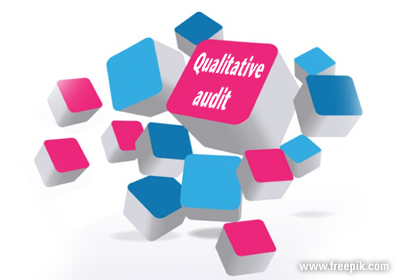Content Strategy Part 1: Content Audits
A lot of organizations generate content from many different resources and departments and produce it in varying formats such as web, PDFs and paper. Oftentimes, the resources generate the same content in different forms in isolation from other departments or functions, which is known as working in a silo. This may not be the approach people want to take, but they don’t get the opportunity to talk about ways to reuse content and follow a larger content strategy due to higher priorities, shortage of resources, organization structure or lack of funding.
Without developing and executing a content strategy, your company content may appear fragmented and it may even conflict. For example, a writer may create technical content for a new product based on an engineering design document, a training specialist may talk to the product manager and then create a different version of this content for an online training module, and a web content writer may get the information from the writer but recreates it following the web content guidelines. As a result, you now have the same information written and presented differently (and potentially with errors) in your marketing materials, training modules and website content. If you send this content to translation, you are paying for that content three times and you may get three different translations. And when it comes to updating the content, you have the overhead of managing all this content in different places and outputs.
Imagine what the customer experience would be like, reading this content in various places and trying to sort out what it means. The customer may get frustrated and call your customer service for help so you’ve incurred yet another cost. Or you may lose the customer.
The Many Components of a Content Strategy

To avoid this situation, put a content strategy in place. You’ll realize many benefits including high-quality, reusable and consistent English and translated content. You’ll also reduce the redundancy and extra expense of working in a silo and reduce translation costs. A content strategy has many components so we’ll discuss them in a series of blog posts.
One of the basic components of a content strategy is a content audit. Before you can create a strategy, you first need to know what content you have and the quality of the content. By conducting an audit, you can uncover or verify issues to address in your overall strategy. Then you can identify gaps and create a future state.
A thorough content audit includes all content that your customers see – digital or printed – such as your website, social media, documentation, sales materials and more. Due to limited resources or budget, you may need to focus on one area, such as technical documentation or website content. Focus on the content that will most help you with your business goals.
In this blog post, we’ll cover in general what a content audit is, the types of content audits and next steps. Look for future blog posts in which I’ll discuss content audits specifically targeted at technical documentation, website content and marketing content.
What is a Content Audit?
A content audit is composed of a quantitative audit (also known as a content inventory) and a qualitative audit.
Content Inventory
An inventory is a representation of the quantity of content you’re analyzing, which could be many things depending on your area of focus and business goals.
Examples:
- Technical documentation: number of quick start guides, installation manuals and operation manuals
- Website: metadata, file size and number of words
- Marketing: quantity and last revision of brochures and case studies
Anyone with a stake in the content can create the inventory and you can track it using a spreadsheet.
Qualitative Audit

Once you’ve completed the inventory, evaluate the content quality. Again, the measures you use for the evaluation will depend on your area of focus and business goals. In general, you can evaluate for measures such as content quality, relevancy, consistency, applicability to customer goals, use of keywords for SEO and many more.
Examples:
- Technical documentation: structure, consistency, terminology
- Website: relevancy, metadata, links
- Marketing: messaging, webpage hits and downloads
Consider having more than one resource, preferably within different functional areas, to be part of the qualitative audit. Again, you can track the data using a spreadsheet.
Next Steps
Once you’ve completed the audit, review the results with a multidisciplinary team. With your business goals in mind, look for patterns in the data, gaps between current and future state, and other measures. Make actionable, measurable recommendations based on the data along with pros and cons of each one and then present your findings to your key stakeholders.
Of course, after doing all this work, you’ll want to keep the audit up-to-date as you add new content.
Conclusion
A content inventory and qualitative audit is one step toward creating an overall content strategy. Look for our next blog post on audits addressing technical documentation.
Resources for Content Localization and Content Strategy
You may gain further insight into content strategy, content localization, translations and related topics by reviewing previous blogs written by GPI:
